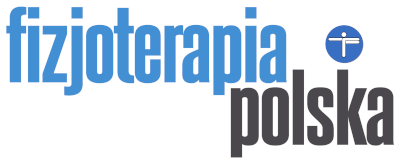I. Submitting the manuscript
Submitting a paper to the editorial office is equivalent to:
1. Declaring that the work has not been published in other journals so far,
2. Declaring that the work has not been submitted to another editorial office so far,
3. Expressing consent by all authors for its publication in Polish Physiotherapy,
4. Declaring by all Authors that they had full access to all the data in the study and take full responsibility for the entirety of the data and the accuracy of their analysis,
5. Declaring by all Authors that they have obtained consent from the heads of the institutions for the inclusion of the provided affiliations. All authors of the paper are required to send in electronic form to the email address of the Polish Physiotherapy secretariat (provided in the statement) a completed and signed scan of the declaration.
STATEMENT FORM (English version)
II. The cost of preparing the manuscript
Fizjoterapia Polska is a bilingual magazine. Manuscripts are published in both Polish and English. Articles have DOI numbers. For non-Polish authors, the manuscripts can be sent in English only. The cost of preparing a manuscript for publication is as follows:
- Up to 18,000 characters with spaces – 680 PLN (about 145 EUR*, 165 USD),
- 18,000 to 23,000 characters with spaces – 830 PLN (about 180 EUR, 205 USD),
- Over 23,000 characters with spaces – 980 PLN (about 215 EUR, 245 USD).
*Prices in currencies other than PLN depend on the current exchange rate of the National Bank of Poland.
III. Manuscript
IV. Rights and duties of author (s)
at the time of submission, the publisher acquires exclusive copyrights to the manuscript for publishing (including the rights to publish in print, electronic media, CDs, other formats, and on the Internet). Without the publisher’s consent, only abstracts may be published elsewhere. Authors may receive one copy of the magazine; however, they must cover the costs of their chosen method of transportation (mail, courier). Free shipping is available only within Poland.. For this reason, authors are not entitled to any remuneration. Upon acceptance of a manuscript for publication, and before it goes to print, the author must make a payment as specified in the table above. Payment should be made to the following account:
Name: DJ Studio Dariusz Jasinski
Street: Bugaj 88 lok 48
Zip code: 95-200
City/Country: Pabianice, Poland
SWIFT: BREXPLPWMBK
Bank account number (IBAN/BIC) in PLN: PL 55 1140 2004 0000 3902 7706 7792
Bank account number (IBAN/BIC) in USD: PL 02 1140 2004 0000 3112 1183 7574
Bank account number (IBAN/BIC) in EUR: PL 82 1140 2004 0000 3512 1382 8415
Bank address: mBank S.A. FORMERLY BRE BANK S.A. (RETAIL BANKING) LODZ, Skrytka pocztowa 2108, 90-959 Łódź 2
SORT CODE – 11402004
The content should include: Prepress – System No. {number given by the editorial}.
There is a possibility to pay by credit card in publisher’s online shop:

